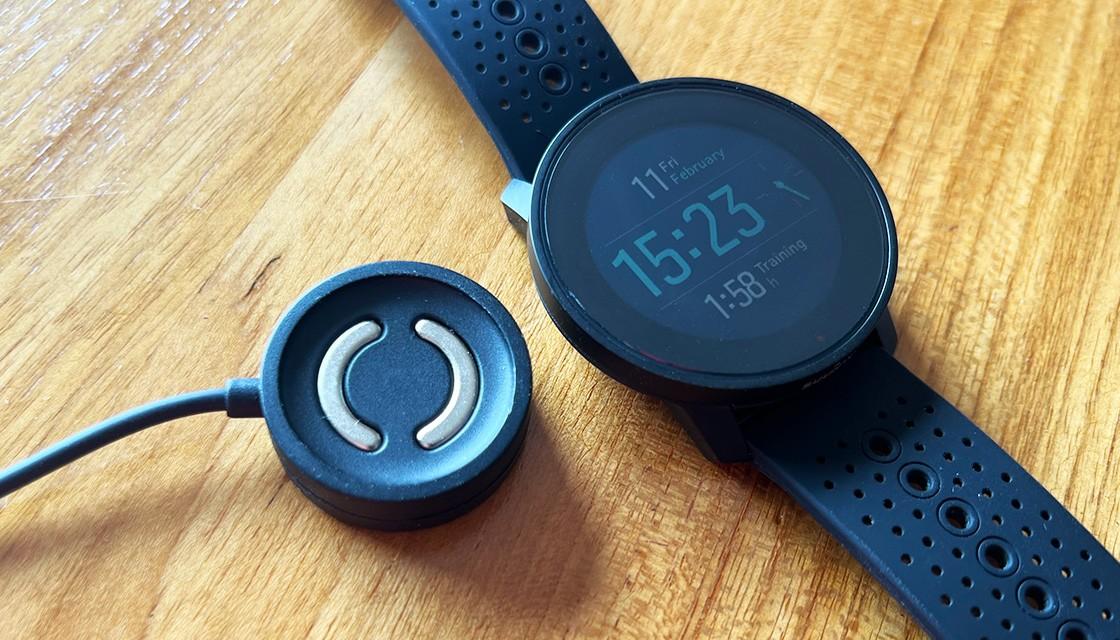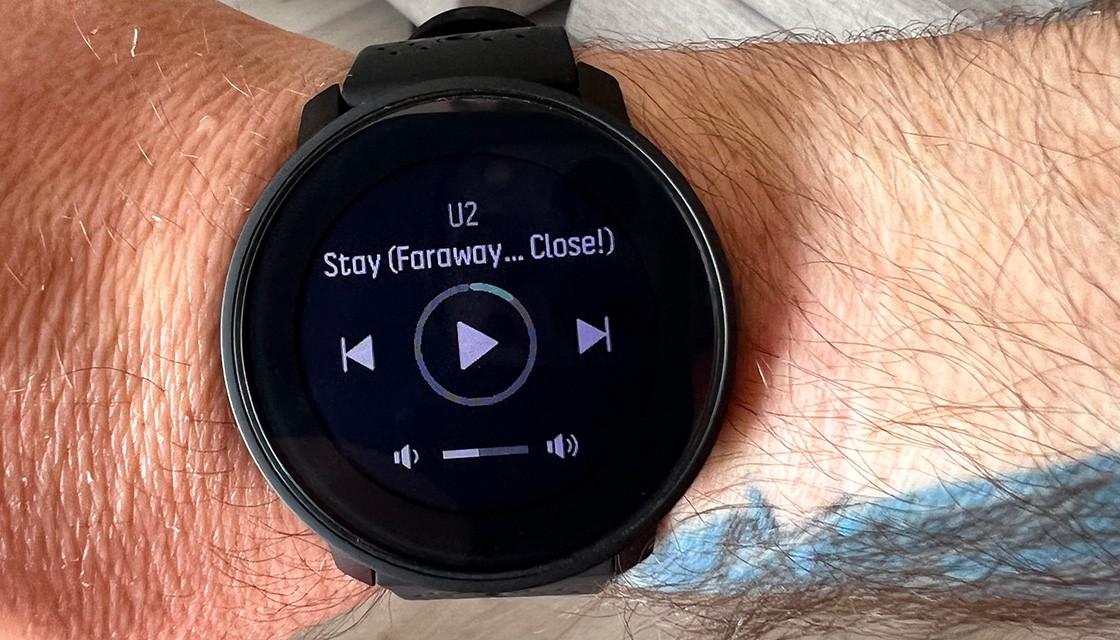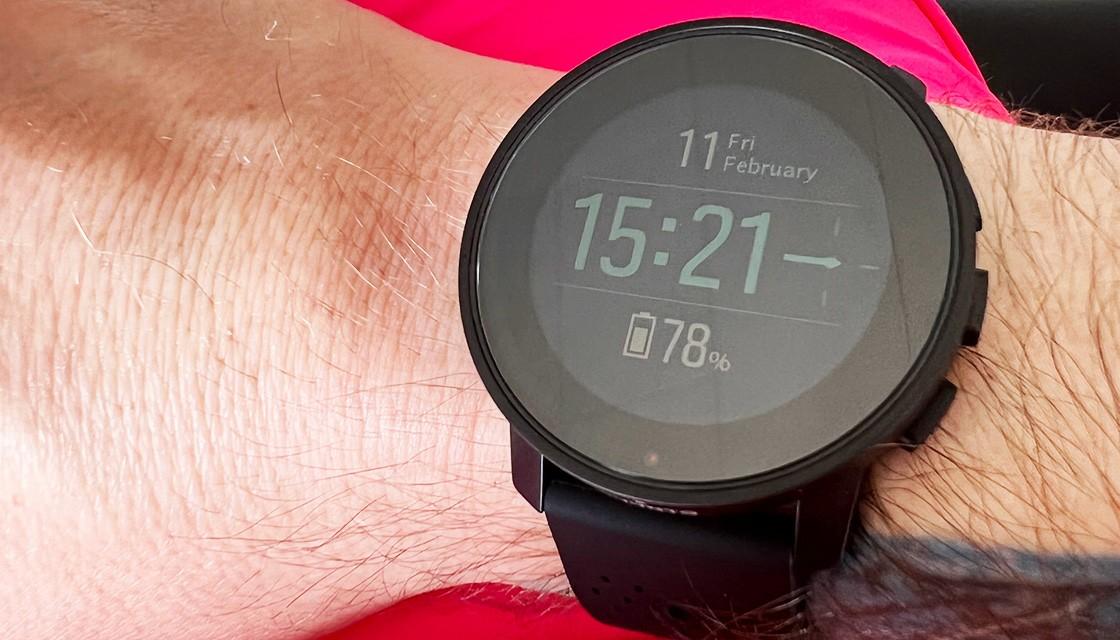
As someone who's been on a massive fitness journey over the past four years, an activity tracker has become absolutely essential to my lifestyle.
My relationship with food is not a great one, and so to maintain my weight at a level I'm comfortable with, I record all my exercise and everything I eat to ensure I understand what's going on with my body.
My first ever purchase was a Fitbit, but I much preferred the Garmin brand once I started taking my exercise seriously. I love the Apple Watch too, but wear that more for its smart features as opposed to its tracking.
So when I was offered the chance to review the updated Suunto 9 Peak, I was delighted at the opportunity to see if the Finnish brand could match up with my current favourites.
I've been using the Suunto 9 Peak for a few weeks now and here are my thoughts.
The good
There's no getting over the sleekness of the Peak. Compared to other bulkier watches, there's a real classiness and tasteful, minimalist appearance.
It's not exactly my style but given I'm a 47-year-old man who wears football tops in public that should absolutely not be held against the Suunto
I really appreciated the secure band and the comfort of it too.
Too often with smart watches I've ended up with irritation on my wrist, whether that's from the back of the watch rubbing against my skin or the band.
I've had none of those issues here, and the band is as good as any I've worn and remains locked when exercising hard.
One of the biggest successes with the Peak is the battery life, which is nothing short of sensational.
I rarely let my activity trackers drain fully, as I want to make sure they're ready to go when I wake up in the morning; but in the time I've been using both this and another watch, I've had to charge the Suunto around 2.5 times less on average.
If you have to charge it more than once a week, I'd be very surprised.

That alone makes it a powerful package worth considering. The handy USB charging puck included in the box also makes it a doddle to charge when you finally need to top it up.
Another major success is the mobile phone app that syncs all your data. Too often it feels like that aspect of a package is an afterthought, yet here I enjoyed it more than any other app I currently use.
It's quick and colourful, with the useful information right there at my fingertips and more quickly accessible than I'm used to. Full marks.
I'm not a massive fan of touchscreens on activity monitors but it works really well here. I gave them up because when wearing certain types of jacket or tops, I found I was accidentally switching off the tracking. There's nothing worse than finishing a run to find out it wasn't properly recorded.
Here, the touchscreen is accurate, responsive and easy to use - and even better, it locks when the phone does and requires a button press to wake it up. It really is the best of both worlds.
The Suunto is also IPX8 rated, which is handy if you're a triathlete, or even just like a splash in the water.
That rating makes it suitable for continuous immersion up to 100m. And given I'm too lazy to remove my watches when I go for a shower, I appreciate that brief time saving too.
It also has a staggering number of different workouts for tracking, far better than most others.
There looks to be around 80 in total, including multiple options for walking and running as well as diverse sports such as frisbee, cheerleading, kitesurfing and paragliding.
Suunto have clearly put a lot of effort into understanding their audience and just how many different ways people like to spend their time. Frankly, it puts others to shame.
And there's more. Throw in the ability to download GPS routes for 'snap to route' directions, getting notifications from your phone, controlling the music on your phone, sleep tracking, blood oxygenation levels and much more, it really is a tremendously comprehensive package.

The bad
As with just about every piece of wearable technology, there are pros and cons to the Suunto 9.
Some are purely preference and I suspect the overall style of the watch may well suit others more than me.
That includes the very limited number of watch faces. One of the best things about technology is being able to personalise it, and I just couldn't find a face here I loved.
Perhaps if I hadn't been spoiled with choice with my other watches this might not have bothered me too much.
I was also surprised just how big the bezel is around the watch face - until I compared it with my Garmin and realised they appeared about the same size. I think the minimalist styling compared to the bulk of my Forerunner played against the Suunto.
There's also a noticeable lag when going into menus. When you're using the touch screen to scroll up through options, it's very quick and receptive; but when you go into the next menu down it takes a little bit of time to open fully.
Again, not a deal killer, just a minor annoyance.

More of a problem is the backlight. I found it difficult to read compared to others when the watch face dims and it's locked, particularly when there's any kind of light shining on the screen.
When the backlight is fully on, it's brighter than other watches I have, which is great. Unfortunately I tend to look at my watch more when the backlight is off and that makes it slightly less useful.
Another issue for me was a software update that was installed automatically. I woke up to a notification the watch had updated - but the time was now set to GMT, 13 hours behind me.
I tried re-syncing it with the Suunto app, but for some reason it wasn't able to connect. I tried rebooting both the phone and the watch, and getting my Bluetooth connection to forget it and re-pairing but it still didn't work.
I left it for a few days out of frustration and eventually worked my way through every menu until I found that 'Discovery', which allows mobile devices to connect with the watch, was switched off.
Unless I went on a sleep-induced settings-changing frenzy then I'm pretty sure I didn't do this, and it was related to the update in some way. It remains a little off-putting.
Of course, those largely mean nothing if the watch itself isn't functional as an activity tracker - and there were some early worries there too.
My first few walks were quite a bit different to the numbers I'm used to seeing, whether that was with my Garmin, Apple Watch or Fitbit.
On distance alone, I got up to 4 percent of difference overall - including one day where a 12.5km walk by other measures came in at 11.98 with the Suunto. Other times it was overestimated by almost as much.
I also found the calculations of calories burned to be wildly different, showing up to 25 percent more in the first couple of weeks.
Calorie measurements are difficult to get right, so differences aren't unexpected, however for someone tracking them carefully it did leave me a little worried - particularly as it could have led to me over-eating.

I can't be 100 percent sure my Garmin is completely accurate. But what I can say is that using it as a source of calorie burning has enabled me to maintain my weight over the last two years, so it must be pretty close.
I'm sure I'd have made the appropriate adjustments if the Suunto was my only device, but it's still something to bear in mind.
More interestingly, however, is that as time has gone on I've noticed the Suunto has become more accurate. I'm not entirely sure why this would be.
My latest walk, a 12.5km wander through my hometown, was measured slightly longer with the Suunto; but the step count, heartbeat rates and calories burned were as close to my other measurements as I've seen them.
My suspicion is that the difference in distances is partly caused by the strength of the GPS signal, which isn't necessarily great where I start most of my walks.
The rest, I'm just delighted to see some 'normality' - it gives me faith that the Suunto is as accurate or inaccurate as every other device.
Last, but not least, there's the price. You'll pay just under $900 for the Suunto, which doesn't put it up amongst the most expensive - but it's definitely not cheap.
For that price you're going to want to do your own evaluation of the options and make your call on the one that suits your lifestyle best, including overall presentation and performance.

The verdict
There are some really nice things about the Suunto 9 Peak and some that aren't quite as impressive.
I'm always wary of taking measurements from any watch as gospel, and there's always a level of inaccuracy with every brand - so the fact the Suunto, at least initially, seemed further away from my exercise norms doesn't worry me too much.
Just a couple of things stop me from making a whole-hearted endorsement here.
First, the $899 price tag is expensive, even for such a good looking and solid watch. If you're prepared to wait for a sale then you might be able to get a bit more of a bargain.
The second is the limited watch faces that make it just a little less useful than my favoured brands. I can see every measurement I want at a glance on my Forerunner 945, yet have to wake the Suunto and tap on the screen multiple times to get those same readings.
My suspicion is that serious athletes - which I am definitely not - will have their own preferences for style and functionality that suits them best and the Suunto might not quite have the cut-through to that top level.
However, if you're keen on making positive changes to your life, sporting a device which will look equally as impressive in the pool, in the gym or at a fancy dinner, then it has a lot going for it.
I will definitely be keeping an eye on this brand and the next time I purchase an activity-tracking watch it'll get serious consideration.
Newshub was supplied with a Suunto 9 Peak for this review.


